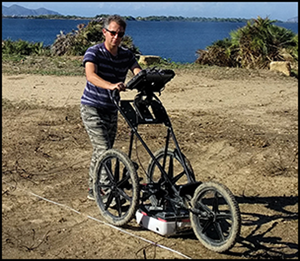No CrossRef data available.
Published online by Cambridge University Press: 02 July 2020

The urban plan of ancient Motya on the Isola di San Pantaleo on the west coast of Sicily and its relationship to developments in Phoenician and Punic societies have been investigated since the early 1960s. Data from geophysical surveys in the north-eastern quadrant of Motya show the regular organisation of urban insulae framed by two broad roads. These results, combined with data from previous nearby excavations, improve the modelling of Motya's layout, and contribute to the wider discussion of Phoenician/Punic and broader Mediterranean urban traditions between the sixth and fourth centuries BC.